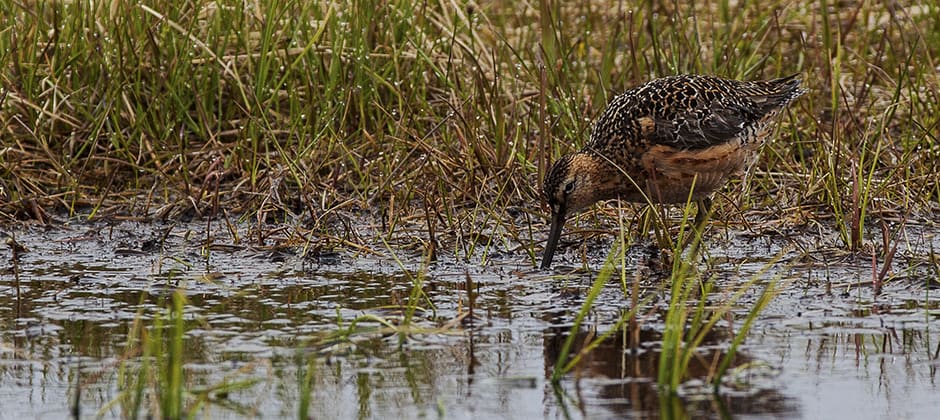Share this article
BLM authorizes increased oil and gas drilling in Alaska reserve
The Bureau of Land Management will allow increased oil and gas drilling in the National Petroleum Reserve in Alaska.
The BLM released a final Environmental Impact Statement for the reserve (NPR–A) in June, which will increase oil and gas drilling in the 23-million-acre tract of federal land in northern Alaska.
Currently, about half of the NRP-A is open to development. Under the new EIS, 82% of the reserve — or 18.6 million acres — will be able to be developed for oil and gas purposes. Approximately 4.3 million acres will remain closed to new infrastructure.
The Wildlife Society wrote to the Department of the Interior when the BLM began its review of the management plan for the NPR-A in early 2018. In the letter, TWS noted that the NPR-A is home to iconic wildlife populations, including two of Alaska’s large caribou herds, millions of migratory birds, globally significant densities of raptors and large concentrations of marine mammals, including beluga whales (Delphinapterus leucas), polar bears (Ursus maritimus), spotted seal (Phoca largha) and walrus (Odobenus rosmarus). Under the Naval Petroleum Reserves Act of 1976, which transferred management of the reserve from the military to the BLM, the Interior Secretary must consider factors such as subsistence hunting, fish and wildlife habitat and scenic values as well as mineral and petroleum resources in the land’s management.
TWS asked the BLM to protect important wildlife habitat on NPR-A lands as it reviewed its plans for the area. The letter noted, “arctic ecosystems are particularly susceptible to disturbance because their biological diversity and net biological productivity are low and climate change is placing additional stress on these systems… Thus, development of a petroleum industry in arctic regions must be implemented carefully to avoid or minimize rapid and perhaps irreparable damage to these unique and easily disrupted ecosystems.”
TWS also asked that the BLM extend maximum protections to several special areas, including the Teshekpuk Lake Special Area, which is one of the most valuable wetland complexes within the reserve. It supports tens of thousands of waterfowl during their flightless molt and has the highest documented density of nesting shorebirds anywhere on Alaska’s North Slope — an area that extends across the northern coast to include portions of the Arctic National Wildlife Refuge. Under the new plan, the entire Teshekpuk Lake Special Area will be available for leasing, with some limitations and stipulations regarding timing and surface occupancy.
The Utukok River Uplands Special Area, the center of the calving area of the Western Arctic caribou herd, would have a core area closed to leasing, a corridor where leasing and infrastructure would be allowed subject to a timing limitation, and a caribou migration corridor available for leasing but subject to stipulations limiting surface occupancy.
Nearly 200 active oil and gas drilling leases currently cover almost 1.4 million acres in the NPR-A, the sales of which generated over $282 million for the federal treasury since 1999. Recent lease sales have increased the acres available for energy development on Alaska’s federal lands, both in NPR-A and the Arctic National Wildlife Refuge.
Read TWS’ position statements on energy development and land management.
Header Image: Bar-tailed godwits (Limosa lapponica) migrate from New Zealand to the National Petroleum Reserve in Alaska each spring. Credit: Bob Wick/BLM








